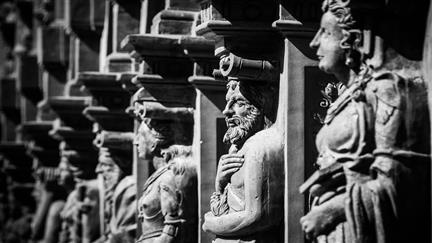
The Trial of Jesus
Created: 3/4/2025
- 1 Comment(s)
Historical Evidence
The following are some of the latest archaeological discoveries related to the existence of key figures present at the trial of Jesus.
- Evidence of Caiaphas' Tomb - the tomb of this priest was discovered in a burial cave in south Jerusalem in 1990. Two of the 12 stone boxes found had the name Caiaphas written on the side, and one contained the entire name, "Joseph, son of Caiaphas." The most elaborately decorated ossuary found in this cave contains two inscriptions relating to Caiaphas.1
- The Pilate inscription in 1961, was discovered by Italian archaeologists working at Caesarea Maritima (Israel) while excavating a Roman amphitheater. It was a tribute from prefect Pontius Pilate to Tiberius Caesar and contains an inscription listing his name and title as: "Pontius Pilate, Prefect of Judea". Pilot corroborates Luke’s writings that Tiberius was emperor at this time and place. Pontius Pilate is also known from the writings of Philo, Tacitus, and Josephus.2
- The Coins of Herod Antipas - as Tetrarch of Galilee, Herod Antipas had the right to mint his own coins. The archaeological record reveals that he minted coins of four denominations during his reign.3
- The Nazareth Inscription - is an edict from an unnamed Caesar inscribed in Greek on a marble slab (tablet). The decree imposed a death penalty in Israel for anyone caught disturbing graves or moving bodies from family tombs, and specifically “sepulcher-sealing tombs,” such as the one Jesus was buried in. It was by acquired by Wilhelm Froeher in 1878 who recorded that it came from Nazareth.4
References:
-
NateHall885
8/21/2024
Some people will say that the life of Jesus of Nazareth wasn't fully true, claiming that Jesus Christ never died to begin with. However, this trail may come to help prove that Jesus did infact be crucified.